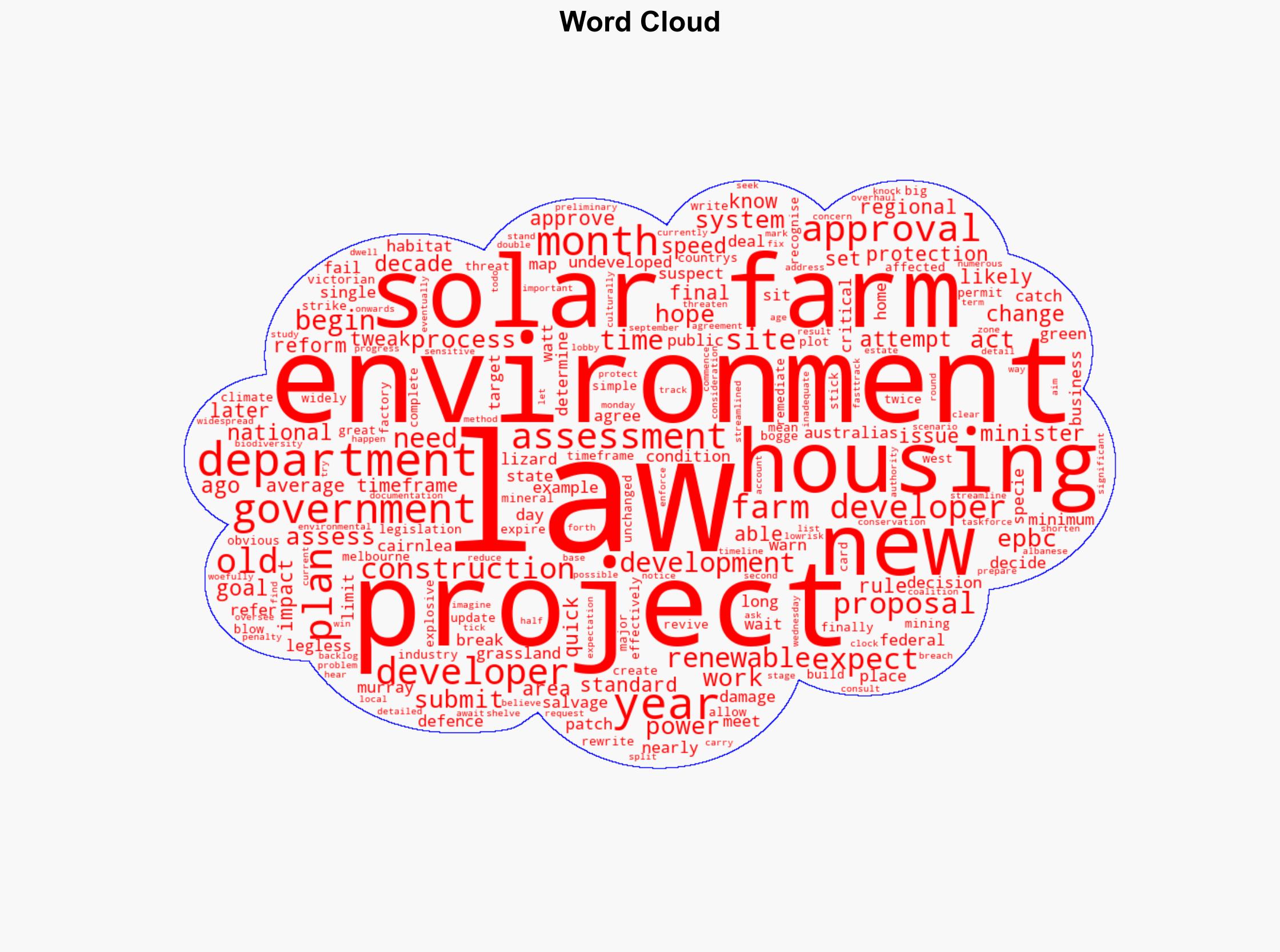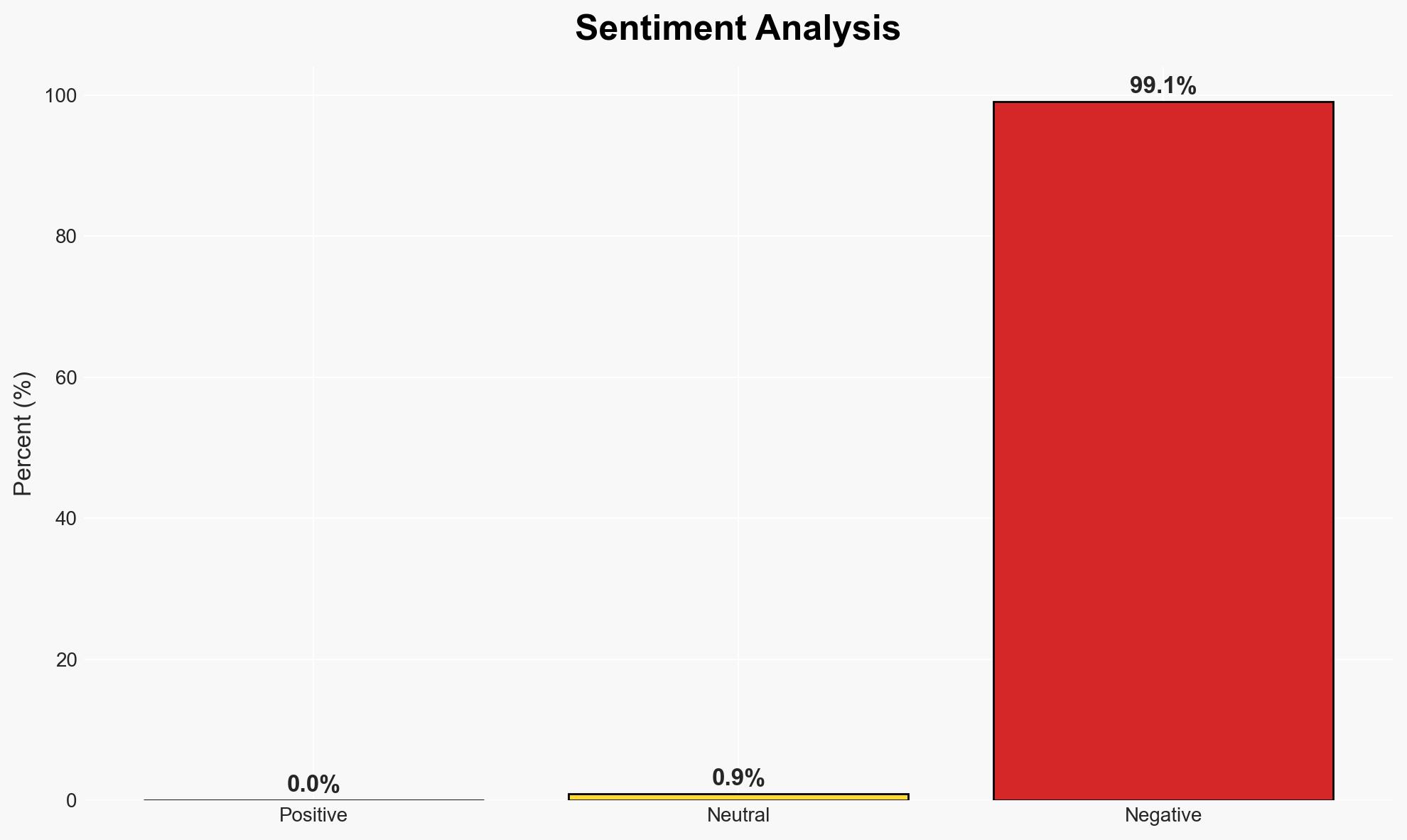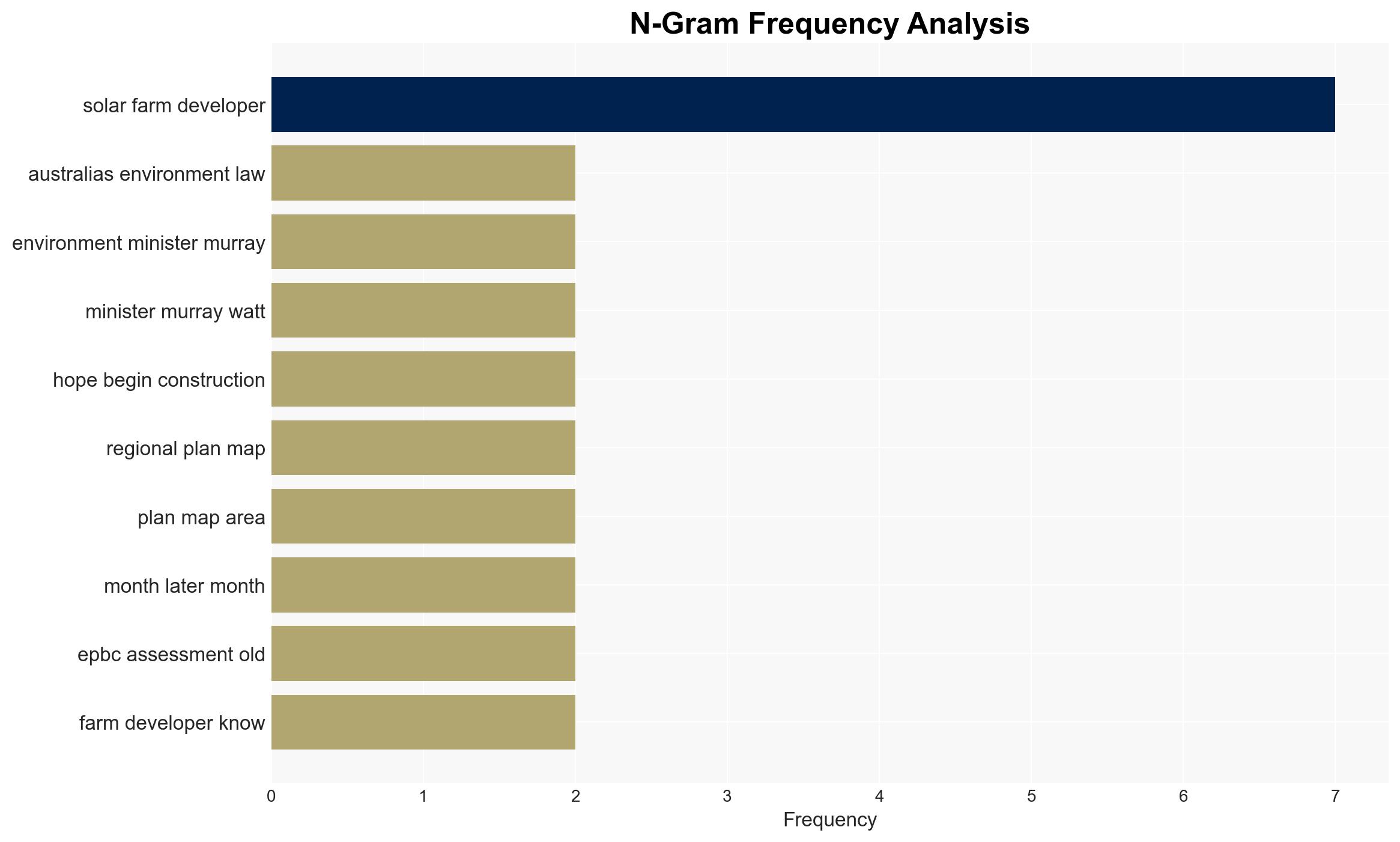Housing and renewable projects may see accelerated timelines due to upcoming changes in environmental legisla…
Published on: 2025-11-27
AI-powered OSINT brief from verified open sources. Automated NLP signal extraction with human verification. See our Methodology and Why WorldWideWatchers.
Intelligence Report: Waits on housing and renewables may have just gone from years to months
1. BLUF (Bottom Line Up Front)
The recent changes to Australia’s environmental laws are likely to significantly reduce the approval times for housing and renewable energy projects from years to months. This development primarily affects developers and government agencies involved in these sectors. Overall, there is moderate confidence in this assessment, given the legislative changes and the expressed intentions of government officials.
2. Competing Hypotheses
- Hypothesis A: The new environmental laws will effectively reduce project approval times, facilitating faster development of housing and renewable projects. This is supported by the government’s intent to streamline processes and the legislative updates. However, uncertainties remain regarding the implementation and potential bureaucratic inertia.
- Hypothesis B: Despite the legislative changes, approval times will not significantly decrease due to entrenched bureaucratic processes and potential legal challenges. This hypothesis is supported by historical inefficiencies in government processes and the complexity of environmental assessments.
- Assessment: Hypothesis A is currently better supported due to the explicit legislative changes and the government’s stated objectives. Key indicators that could shift this judgment include delays in the implementation of the new laws or significant legal challenges that undermine the intended reforms.
3. Key Assumptions and Red Flags
- Assumptions: The legislative changes will be implemented as planned; government agencies will align with new processes; developers will comply with updated standards; there will be no significant legal challenges.
- Information Gaps: Detailed timelines for the implementation of new laws; specific procedural changes within government agencies; potential resistance from environmental groups.
- Bias & Deception Risks: Potential optimism bias in government statements; source bias from stakeholders with vested interests in expedited project approvals.
4. Implications and Strategic Risks
The legislative changes could lead to a more dynamic development environment, with potential impacts on housing availability and renewable energy capacity. However, there are risks of environmental oversight and public backlash if the reforms are perceived as undermining ecological protections.
- Political / Geopolitical: Potential for increased domestic political support for the government if reforms are successful; risk of international criticism if environmental standards are perceived to be weakened.
- Security / Counter-Terrorism: Limited direct impact, though increased infrastructure development could indirectly affect security dynamics.
- Cyber / Information Space: Potential for misinformation campaigns targeting the reforms, particularly from environmental advocacy groups.
- Economic / Social: Potential boost to the construction and renewable sectors; risk of social unrest if environmental concerns are not adequately addressed.
5. Recommendations and Outlook
- Immediate Actions (0–30 days): Monitor the implementation of the new laws; engage with key stakeholders to assess their readiness and concerns; prepare communication strategies to address potential misinformation.
- Medium-Term Posture (1–12 months): Develop partnerships with industry and environmental groups to ensure balanced development; enhance monitoring capabilities to track the impact of the reforms.
- Scenario Outlook:
- Best: Streamlined processes lead to rapid project approvals, boosting economic growth and renewable capacity.
- Worst: Legal challenges and bureaucratic inertia stall reforms, leading to continued delays and public dissatisfaction.
- Most-Likely: Moderate improvements in approval times, with some resistance and adaptation challenges.
6. Key Individuals and Entities
- Environment Minister Murray Watt
- Australian Federal Government
- State Governments (e.g., Victorian Government)
- Developers in housing and renewable sectors
7. Thematic Tags
Structured Analytic Techniques Applied
- Cognitive Bias Stress Test: Expose and correct potential biases in assessments through red-teaming and structured challenge.
- Bayesian Scenario Modeling: Forecast futures under uncertainty via probabilistic logic.
- Network Influence Mapping: Map relationships between state and non-state actors for impact estimation.
Explore more:
National Security Threats Briefs ·
Daily Summary ·
Support us





